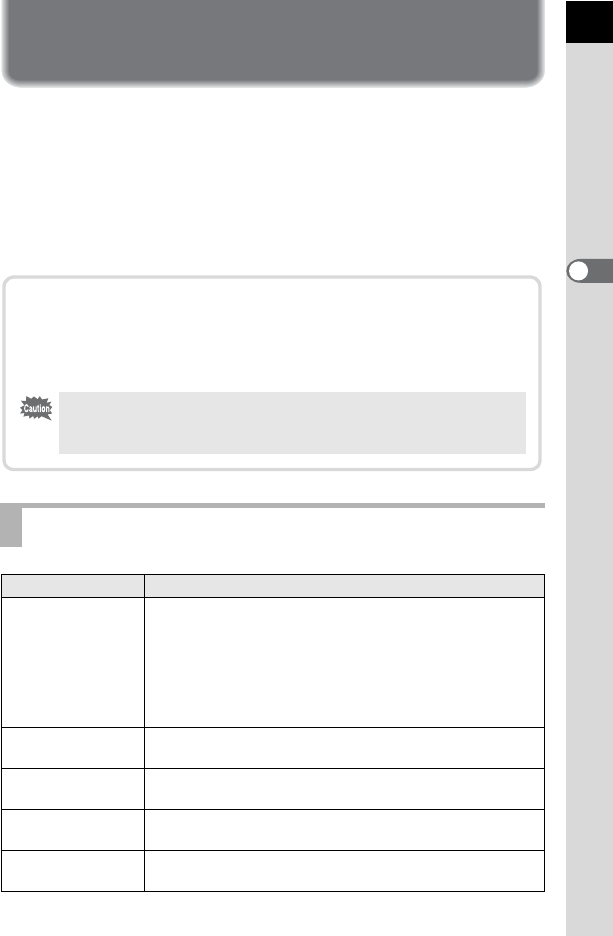
65
Basic Operations
3
Using the Built-in Flash
Use the following procedures to take pictures in low light or backlit
conditions or when you want to manually use the built-in flash.
The built-in flash is optimum at about 0.7 m to 5 m from the subject.
Exposure will not be properly controlled and vignetting (darkening of the
corners of the image due to a lack of light) may occur when used at a
distance closer than 0.7 m (this distance varies slightly depending on the
lens being used and set sensitivity (p.138)).
Setting Flash Mode
Flash Mode Function
g
Auto
discharge
Camera automatically determines ambient light and built-in flash
pops up. The flash pops up and discharges automatically when
necessary, such as when using a shutter speed likely to cause
camera shake or in backlit conditions (excluding when in
s
(Landscape),
\
(Moving Object) or
l
(Night Snap) in
H
(Scene) mode). The flash may pop up but may not discharge
if the camera determines that the flash is not necessary.
b
Flash On
Discharges flash manually. Discharges when the flash is
popped up, does not discharge when retracted.
i
Auto flash+
Redeye reduct
Lights a red-eye reduction light before automatic flash.
D
Flash On+
Red-eye
Discharges flash manually. Lights a red-eye reduction light
before discharging the flash.
r
Wireless Mode
You can synchronize a dedicated external flash
(AF540FGZ or AF360FGZ) without using a sync cord.
Compatibility of built-in flash and lens
Vignetting may occur depending on the lens being used and the
capture conditions. We recommend taking a test shot to confirm this.
1 Lens Compatibility with the Built-in Flash (p.139)
• When using the built-in flash, remove the lens hood before shooting.
• The built-in flash fully discharges for lenses without a function to set
aperture lens ring to s (Auto).


















